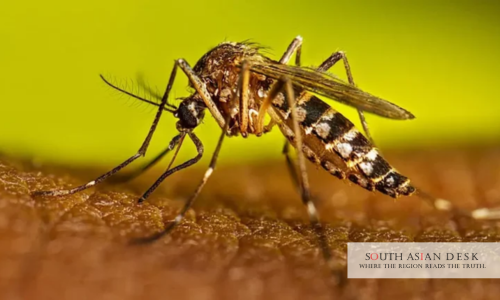Dhaka: Health officials in Bangladesh recorded 510 new dengue cases in the last 24 hours ending Friday morning, 18 October 2025, with no fatalities, according to the Directorate General of Health Services (DGHS). The surge highlights persistent challenges in urban areas like Dhaka, where hospitals remain under pressure.
This latest spike in dengue cases Bangladesh last 24 hours underscores a broader regional health crisis in South Asia, where climate factors and urbanisation fuel vector-borne diseases, potentially straining cross-border resources and economies in neighbouring countries like India and Nepal.
Recent Dengue Trends in Bangladesh
The 510 new dengue cases Bangladesh last 24 hours bring the year’s total to 58,280 infections. Of these, 2,677 patients are currently hospitalised nationwide, with 941 in Dhaka alone. Breakdown shows 116 cases in Dhaka North City Corporation, 36 in Dhaka South City Corporation, and the rest scattered across divisions including Barisal (65), Chittagong (88), and others.
No deaths occurred in this period, keeping the annual toll at 243. However, dengue deaths Bangladesh October 2025 have risen sharply, with 51 fatalities recorded so far this month. This follows a pattern of escalation seen earlier: 9 deaths on 5 October, 5 on 12 October, 3 on 13 October, 5 on 14 October, 4 on 15 October, and 1 on 16 October.
Experts attribute the rise to seasonal rains and inadequate mosquito control, amplifying risks in densely populated areas. Health bulletins indicate that 61.2% of recent patients are men, while 38.8% are women, reflecting broad demographic impact.
Dengue Surge Children Bangladesh: Growing Concerns
A notable aspect of the current outbreak is the dengue surge children Bangladesh, with hospitals reporting increased admissions among younger patients. At Mugda Medical College Hospital in Dhaka, over 20 children are admitted daily with symptoms like high fever, rashes, and dehydration. This trend mirrors reports from other facilities, where children crowd wards, straining paediatric resources.
The dengue surge children Bangladesh raises alarms about long-term health effects, as severe cases can lead to complications like dengue haemorrhagic fever. Health experts urge prompt testing and hospitalisation to prevent fatalities, noting that late arrivals contribute to higher risks.
This vulnerability among children ties into broader environmental factors, such as stagnant water breeding sites post-monsoon, which exacerbate transmission by Aedes mosquitoes.
Background on Dengue in Bangladesh
Dengue has plagued Bangladesh for decades, with outbreaks intensifying due to climate change and rapid urban growth. In 2023, the country faced its deadliest year, recording over 321,000 cases and 1,705 deaths. While 2025 figures are lower overall, the October surge signals a potential rebound.
Comparisons show dengue cases Bangladesh last 24 hours at 510, down from peaks like 953 on 12 October but still elevated. Cumulative data from January reveals steady climbs: over 46,000 cases by late September, jumping amid warmer, wetter conditions. Dengue deaths Bangladesh October 2025, at 51, account for a significant portion of the year’s toll, prompting calls for enhanced surveillance.
Government responses include fogging operations and public awareness campaigns, but challenges persist in rural areas with limited healthcare access. The disease’s four serotypes complicate immunity, leading to repeated infections and severe outcomes in some cases.
Impact on Healthcare and Economy
The ongoing dengue cases Bangladesh last 24 hours strain hospitals, with bed occupancy rising in key cities. Dhaka’s facilities handle the bulk, but divisions like Chittagong and Barisal report overflows. This pressure diverts resources from other ailments, highlighting systemic vulnerabilities.
Economically, outbreaks disrupt livelihoods, especially in agriculture and informal sectors where workers fall ill. In South Asia, similar patterns in Pakistan and Sri Lanka amplify regional concerns, with potential for cross-border spread via travel and trade.
Preventive measures remain key: eliminating breeding sites, using repellents, and community clean-ups. DGHS advises seeking medical help at fever onset to avoid complications.
What’s Next for Dengue Control
Authorities plan intensified vector control in high-risk zones, with possible vaccine trials on the horizon. Monitoring dengue deaths Bangladesh October 2025 will guide responses, as cooler weather may reduce cases by November.
Public health campaigns target the dengue surge children Bangladesh, emphasising protection for vulnerable groups. Collaborative efforts with international bodies like WHO could bolster strategies.
As the situation evolves, tracking dengue cases Bangladesh last 24 hours will be crucial to averting a full-scale epidemic.
Published in SouthAsianDesk, October 18th, 2025
Follow SouthAsianDesk on X, Instagram, and Facebook for insights on business and current affairs from across South Asia.






